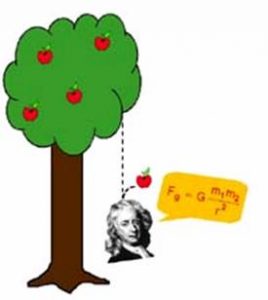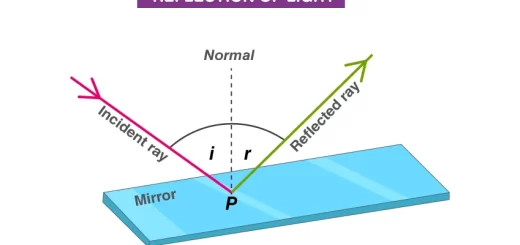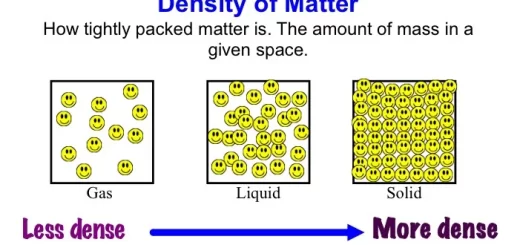Newton’s Universal Gravitation Law, Circular Motion & Factors affecting gravitational field intensity
Coincidence played the main role in the discovery of the general gravitational law by Isaac Newton when he noticed the fall of an apple from a tree to the ground , Newton concluded some basic assumptions that helped him to formulate the general gravitational law .
Newton’s Universal Gravitation Law
Of these assumptions :
- The apple falls because the Earth has attracted it , and in turn the apple attracts the Earth .
- The gravitational attraction between bodies extends over vast distances because of this , there is a mutual attraction between the Earth and the Moon , also between the Sun and the planets that orbit it .
- This gravitational attraction between bodies depends on masses of the attracted bodies and the separating distance between them .
Through these assumptions he formulated the general gravitational law :
The general ( universal ) gravitational law :
A body in the universe attracts another body by a force which is directly proportional to the product of their masses and inversely proportional to square the distance between their centers .
Mathematical expression for the general gravitational law :
F = G M m / r²
Where ( r ) is the distance between the centers of the two bodies and ( G ) is the general gravitational constant .
Gravitational constant is the mutual force between two bodies each of mass 1 kg and the distance between their centers is 1 m .
G = Fr² / Mm
G = 6.67 × 10−11 N.m².kg−2 = 6.67 × 10−11 m³.kg−1.s−2
Dimensions of the general gravitational constant : M−1L³.T−2
The gravitational attraction force obviously exists between the orbs , while it is unnoticeable between ordinary objects on the Earth like two persons stand beside each other or two adjacent cars .
That is because of the great masses of orbs compared to those of ordinary objects on the Earth where the gravitational force is directly proportional to the product of the attracted masses .
Abu Al-Reihan Al Biruni :
The astronomer Abu Al-Reihan Al Biruni succeeded to determine the perimeter of the Earth , Other Arab scientists like Ali Ben Eissa Osterlab and Ali Al-Buhtury had contribution in development of astronomy .
Gravitational Field
The universal gravitational law states that the gravitational attraction between two bodies is inversely proportional to square the distance between their centers , Thus , the gravitational force decreases gradually with distance till the distance between the two bodies reaches a point at which the attraction ceases .
Within this distance , there is region in which the attraction forces appear , this region is called the gravitational field , The gravitational field is the space in which the gravitational forces appear .
Gravitational Field intensity ( g )
The gravitational field intensity of the Earth at a point is equal to the acceleration due to gravity at this point , It is the gravitational force acting on a mass of 1 kg .
By applying the universal gravitational law :
F = mg , F = G m M/ r²
∴ mg = G m M / r²
The gravitational field intensity is determined by the relation :
g = G M / r²
Where : r = R + h
Unit of gravitational field intensity m / s² or N / kg .
Where : ( M ) is the mass of the Earth that equals 5.98 × 1024 kg , ( r ) is the distance away from the Earth’s center , ( R ) is the radius of the Earth that equals 6378 km and ( h ) is the height of the point above the Earth’s surface .
If the body is at a height ( h ) above the Earth’s surface : g = G M / ( R + h )²
If the body is at a depth ( h ) below the Earth’s surface : g = G M / ( R − h )²
To compare the acceleration due gravity for two planets : g1 / g2 = M1 R2² / M2 R1²
Factors affecting the gravitational field intensity ( g )
Mass of planet : The gravitational field intensity is directly proportional to the mass of the planet , Slope = g / M = G / r²
Distance from the center of planet : The gravitational field intensity is inversely proportional to square the distance from the center of the planet , Slope = g r² / GM .
Fundamental Forces in nature, Gravitational forces, Electromagnetic forces & Nuclear forces




